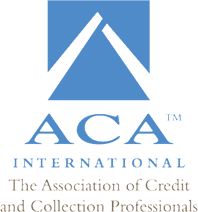For any business, the idea of credit and loans can become difficult to understand. This idea is true for businesses that are trying to secure capital, but it’s just as crucial a question when a business is in the practice of lending it out. Whether you’re in the business of lending money, or whether you operate on a model where clients end up owing you money for services rendered. It’s important to have an idea of how credit works, why it’s essential to a business and how credit analysis can help you get a better handle on just how and when to collect debts.

The Five C’s
Deciding to lend money or extend credit is crucial to any business. However, knowing when or when not to can be difficult, and often comes down to performing a credit analysis. When it comes to performing that basic analysis, most often this financial examination takes the form of an examination into what is known as “The Five C’s.” Each C tells the prospective lending institution something necessary about their potential client.
Capacity
The first, and most important C, stands for “capacity.” In this case, it refers specifically to a client’s capacity or ability to repay a debt. When someone is looking at a client’s capacity, they are trying to determine exactly if, and how, a debt can be repaid. Is the client planning on using cash? When and how often can payments be made, and how long will it take for the client to repay back all of the outstanding debt? A client’s payment history comes into play here, because past performance can be a strong indicator of future payment reliability.
Capital
The second C stands for “capital” — this is not about the amount of capital your client or customer has; rather, it’s an indicator of how much you are investing in this client or customer. This is important because an institution needs to assess exactly how much it has the potential to lose, should a debt not be repaid. Typically, institutions that invest a lot of capital without having much in the way of guaranteed return are at a much higher risk should anything go wrong in the future.
Collateral
The third C stands for “collateral.” Do the customers you loan to provide you with any guarantee to help offset your risk, should anything go wrong? The answer to this often depends on exactly what type of credit is being extended. For example, a mortgage loan typically has the house in question offered as a form of collateral. Depending on your clients and how they secure their credit, there might be collateral involved in their own debt collection scenarios. In other cases, some form of written guarantee may also be required to help ensure that a debt will be repaid. The guarantees help to provide legal options should anything go wrong.
Conditions
When a business is thinking about lending out money, they have a legitimate reason to wonder what, exactly, the money is going to be used for. For this reason the fourth C, “conditions,” is all about. What is the intended purpose of the credit being extended? Will it be used for purchasing equipment, making additional investments or some other expense? Is it a purpose where one can expect a reasonable return, or is it a hare-brained scheme that will most likely result in the money being lost?
“Conditions” also relates to the local economic conditions and the overall industry-related climate, which can help the lending institution make the decision about how sound an investment is in the first place.
Character
The fifth and final C, “character,” can be the hardest one to put a finger on, but it is arguably the most important one. Character refers to the general trustworthiness of the person asking for credit. Can he or she be expected to pay it back? Do they have a past that calls their character and trustworthiness into question? Even when all of those other C’s paint a good picture, this fifth C can make a potential client seem like too much of a risk, and can, therefore, cast doubts on what would otherwise be a done deal.
After the Analysis
Performing a credit analysis such as this is one way that businesses use the information to help them make sound financial decisions. When it comes to dealing with debt, though — especially debt that’s been assumed by others — this analysis might not always tell the whole story and is only the first step. Still, it can go a long way towards determining which risks you find it acceptable to undertake, and which risks are better left untouched.
Follow us Burt and Associates in Twitter

